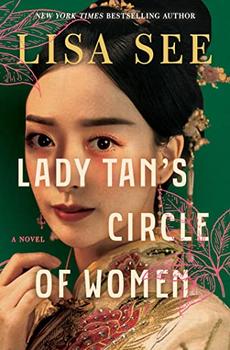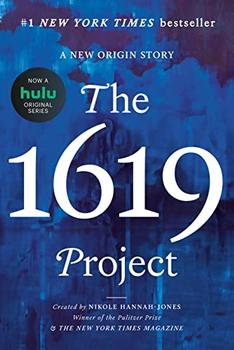Reading Guide Questions

Please be aware that this discussion guide will contain spoilers!
- In her prefatory author's note, Shobha Rao writes, "Though the commonly used term for these women is recovered women, I have chosen to refer to them as restored. The distinction may seem trivial, but it is necessary, forI believe that while the recovery of a person is possible, the restoration of a human being to her original state is not." Discuss the implications of this distinction in Rao's collection. How does the phrase "an unrestored woman" resonate throughout these stories?
- The epigraph is a quote from Michael Ondaatje's The English Patient: "All I desired was to walk upon such an earth that had no maps." Do all of Rao's characters share this desire? What power do maps hold in this collection? How do the consequences of the Partition of India and Pakistan shape each of the stories?
- An Unrestored Woman comprises story couplets: in story B, a minor character from story A comes to the fore; in story D, a minor character from story C comes to the fore. Why do you think Rao chose to do this? How does the effect of this narrative structure differ from that of a traditional story collection or from a novel?
- In the opening sentence of the collection, Neela feels "an intense hunger." Nearly all of Rao's characters are physically, emotionally, sexually, or spiritually hungry. How does hunger motivate or inhibit them?
- Did you read the ending of the titular story as tragic? Do you think Neela drank the poison? Is there a kind of freedom in her decision?
- In "The Merchant's Mistress," Renu "sensed the kind of sadness [in Savitri] she had sensed in Neela. But why should a destitute girl in a refugee camp and the wealthy wife of a diamond merchant have the same kind of sadness?" Discuss their mutual sadness. Why does Renu seem drawn to it, and what does she do to assuage it?
- The diamond merchant tells Renu, "You're the candle and the match." What does he mean by this, and why does it move her so powerfully?
- Discuss this moment from "The Imperial Police": "Abheet Singh looked a long while into Jenkins's eyes then slowly, almost tenderly, he reached toward him, wrapped his hand around his trembling wrist, and stilled it. The motion was so delicate, so utterly benevolent and sexless, that Jenkins could hardly breathe, and in that moment he thought he might've come to know, for the briefest moment, the thing for which he'd always yearned, the thing that was the opposite of his many, many lonely years, the opposite—at this, he closed his eyes—of his concealment." What is Jenkins yearning for? Do you sympathize with him in this story?
- In "Unleashed," Anju wonders, "Was defiance temporary, like a gust of wind that lifted you once, then set you down? Or was it always there, inside of you, like a small dinghy tied to the harbor of your heart, waiting, at the ready, to launch?" Many of Rao's stories hinge on moments of extreme defiance. Do you think those moments reveal true character, and, if so, are they positive or negative experiences?
- Did you feel any sympathy for the mother in "The Lost Ribbon"? When she says, "It's not the world we have to withstand, my Noora, it is ourselves," what does she mean? Does that assertion explain or justify her actions?
- In "The Opposite of Sex," Mohan believes that the opposite of sex is fear. Do you agree? How are sex and fear related in the other stories in the collection? How does that relation change depending on a character's gender or a story's setting?
- The narrator in "The Road to Mirpur Khas" says, "love is simply a feeling that we walk off and forget at the side of the road, remembering it only hours later, and wondering—because we cannot go back, because we have come too far—at the lightness of our load." Many of the characters in An Unrestored Woman are trapped in loveless marriages. Is love ever a powerful force in these stories?
- At the end of "The Road to Mirpur Khas," the narrator asks his wife,Arya,if she hears the ducks: "She listens for a moment. Her eyes brim with tears,or maybe mine do. She lifts my chin as I'd once lifted hers. 'Yes,' she says finally, almost in a whisper. 'Yes. I hear them.'" What significance does the sound of ducks hold for this couple? What does this exchange suggest about the future of their marriage?
- In "The Memsahib," Arun, an Indian servant,is humiliated when he confesses his love to the British mistress of the house. How are class, colonialism, and exoticism portrayed in this collection? How does Arun's experience compare to Renu's in "The Merchant's Mistress,"and why?
- In "Curfew," Safia imagines cutting herself with a steak knife: "It would make a line; she could draw a map. And that would be the true country. Not this one, and not the one she lived in, and not the one she'd left." What does she mean by "the true country"? Why do you think Rao decided to set this final story in Italy, in the present day? How does Partition continue to resonate through "Curfew"?
- The last line of the collection reads, "But this, Safia thought — running and running and running—this is how you begin." Discuss how, in An Unrestored Woman, moments that seem like endings are actually beginnings. Do you feel hopeful for Safia and Ethan?
- Which story most moved you? Why?
Unless otherwise stated, this discussion guide is reprinted with the permission of Flatiron Books.
Any page references refer to a USA edition of the book, usually the trade paperback version, and may vary in other editions.






